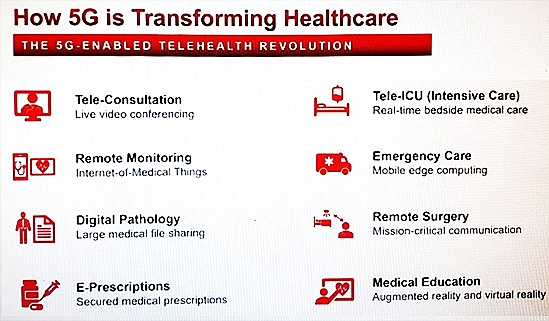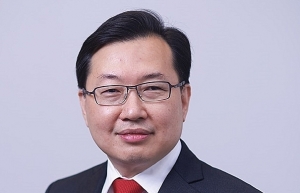Keysight Technologies drives telehealth growth
 |
| Ee Huei Sin, vice president, Keysight Technologies’ General Electronic Measurement Solutions |
Telehealth is developing rapidly around the globe and in Vietnam amidst the 5G rollout. What major telehealth trends can you foresee?
The telehealth industry is projected to reach $266 billion by 2026 with a compound annual growth rate of 20 per cent. COVID-19 has definitely accelerated the rise of telehealth, during which we have also seen broader investment in 5G infrastructure development, AI, and big data analytics for healthcare, as well as regulatory changes offering funding and incentives.
In the US, which is actually the largest telehealth market right now, the preference for teleconsultation, favourable health reimbursement, and also support from government and major players actually encourage the quick adoption of telehealth solutions. In Europe, we are seeing a high adoption of wearable remote monitoring devices, while in the Asia-Pacific, telehealth is growing due to the high population – and this is particularly true for China.
Evidently, 5G enables the full scale of telehealth. South Korea, China, and the US are leading in building and deploying this technology. Mobile operators, including AT&T, Korea Telecom, and China Mobile all have been racing to build the 5G network in their countries. As more devices are connected to the internet, the need for high speed, high bandwidth, and low latency increases.
In addition to these three countries, about 34 countries globally are actually trialling 5G right now and more are jumping on the bandwagon. By 2025, 5G adoption is expected to reach 20 per cent of global connection.
In Vietnam, we are seeing issues shared by many other developing countries – lacking access to quality healthcare. As 70 per cent of the Vietnamese population is living in rural or remote areas, telehealth actually can help increase access at these remote areas and also address the medical personnel shortage while reducing overall healthcare costs by cutting down on actual hospital visits. In late 2015, state-owned telecom operator Viettel introduced its telehealth solution to some Metropolitan hospitals in the northern part of Vietnam, offering critical diagnosis consultation and medical education research, but not including treatment.
This Viettel solution is actually quite widely adopted in Vietnam and services have been extended to include remote patient monitoring. For example, in late 2016, the Quang Ninh Department of Health had a great initiative to create a telehealth network that combined access to 24 hospitals and community healthcare centres to provide medical care to remote communities. Just a few months ago, National Hospital of Paediatrics in Hanoi has also rolled out its telehealth system.
 |
How can technology companies like Keysight contribute to driving the growth of telemedicine? What technologies and solutions do you have that could serve this purpose?
Keysight, as a technology leader, enables and helps accelerate innovations to connect and secure the world. We have 1,700-plus patents, and that's where our intelligence and expertise are lying. We offer an end-to-end 5G solution to network operators, chipset and device makers from early design to development, validation, and manufacturing all the way to deployment right now.
Keysight solutions support the development of 75 per cent of the several hundreds of 5G devices that have been announced from design process validation and conformance phases. We work with all the leading mobile operators, from China Telecom, SK Telecom, Korea Telecom (KT), NTT Docomo and to Verizon and other top chipset device manufacturers like Qualcomm, Samsung, MediaTek, and many more to accelerate the 5G commercialisation.
There are some important changes and the important new standards in 5G that are going to help telehealth. 5G enhanced mobile broadband (eMBB), offering higher speed and high bandwidth, and speeds of up to 100 times faster than 4G systems with very high definition video for online calling. The next important standard is that it is ultra-reliable and low latency communications (URLLC). Low latency means minimum or no delay in the whole process, which is critical for mission-critical applications such as remote surgery.
The other important standard is massive machine type communication (mMTC). This is to support what we call the internet of medical things (IoMT). Right now, with the current 4G we can talk of only supporting about 4,000 devices per square kilometre, but with 5G mMTC, we are talking about one million devices per square kilometre. This standard is important to ensure that everybody gets a share and ensure connectivity. The new 5G standard is important to ensure that we can execute our vision for the future, with effective and efficient telehealth services.
In addition to 5G contribution, Keysight is involved in a lot of research. There are a lot of new devices we’re working on. We are working with some key innovative healthcare companies on using radio frequency (RF) and microwave technology in sensing and imaging for healthcare applications and other new applications. We have recently announced our collaboration with EMVision in Australia to develop a portable brain scanner for the rapid assessment of stroke and brain injury. The scanners are now in clinical trial and if it works, it will see wide adoption in hospitals and ambulances.
We're also cooperating with a number of research companies and universities in Europe to advance telehealth services.
The third area of Keysight contribution is in IoMT. Keysight works with many companies for testing mission-critical devices. We do what we call the 5Cs of IoT. In 5Cs, the first C is connectivity, making sure that wireless communications, such as Bluetooth, Wi-Fi, and cellular connections are realiable. The second C is continuity, making sure that the device can last, the battery works and can last for as long as required – five or 10 years, normally. The third C is about compliance, ensuring that these IoMTs meet regulatory requirements in every country. The fourth C is co-existence. With so many IoT devices around, we have to make sure that they can co-exist with no interference. And we're going to see a lot more of these new standards coming out to make sure that co-existence is a consideration for all IoMT devices. The last, but nevertheless a very important C, is cybersecurity. With this telehealth process, teleconsultation, transfer of huge data and so on, patient privacy and data security become very important. In this area, we provide customers with not just the network visibility test but also cybersecurity test. We usually come up with a lot of software test automation and data analytical tools to help improve healthcare and telehealth and connectivity efficiency, as well as overall performance.
Just recently, we announced the acquisitions of UK-based company Eggplant, which works on AI-powered test automation software. This new acquisition also has a lot of hospitals as customers and has helped them conduct user-centric performance testing to check on the user interface and optimise digital experience.
The Vietnamese government has approved the master plan on digital diagnosis and treatment in 2020-2025. What are the opportunities and challenges for Vietnam? What lessons should Vietnam learn from to succeed with digital transformation in healthcare?
It is a good initiative and good timing for the Vietnamese government to promote this digital transformation in the healthcare sector. We see that there is actually a growing interest among a lot of startups in this area in Vietnam. We also recognise that Vietnam is definitely one of the fastest-growing medical device markets in Southeast Asia with an estimated growth rate of about 9.6 per cent annually. All these are very positive trends. With this, rural areas are going to see a lot of benefit with better quality healthcare moving forward.
Vietnam currently has thousands of hospitals spread across rural and urban areas. Therefore, 5G would be ideal to connect them and to apply telehealth.
The key thing is the large short term investment that will be needed. Currently, Vietnam is focusing on key medical hubs in Ho Chi Minh City, Hanoi, and some Tier Two cities, but it will definitely reach out to the smaller cities and towns over time.
For 5G deployment, one of the challenges is the huge investment in the early stage because the demand and economies of scale for 5G services are still not clear. We don't see a lot of 5G applications yet.
Vietnam has its strengths and opportunities. The country definitely has a long way to go in developing its software system and applications or supporting telehealth services. The country also needs to push for more innovation in the development of medical and wearable devices with cellular capability for remote monitoring, which is very important in readying it for 5G. And when 5G will be ready, it will encourage a lot of more startups in the area.
Besides helping the startups, the government should encourage more collaborations among industry players and stakeholders to grow telehealth applications for diverse needs, as well as have a very clear policy and create incentives.
Hospitals should work with mobile operators, partnering to create the infrastructure for healthcare. Insurance companies, meanwhile, could also join to make sure that telehealth expenses are reimbursable and could support telehealth expenses and advancements. Meanwhile, medical device companies should continue to innovate and figure out new applications on a 5G network.
There are some areas where Vietnam could look to other countries or areas to prepare and set itself up for success. I also want to highlight that telehealth services can be scaled based on need. You don't need 5G to start telehealth like Vietnam is doing because already some level of telehealth services are being offered by teleconsultation.
It should be made sure that the current telehealth services, the software, the application, the end-to-end clinical process is being considered and readied. The country can begin implementation under the current 4G – maybe it will not be able to do a lot of critical missions or handle critical real-time and high-quality services, but it will be a first step. Getting ready for 5G step by step will take time and it's very good that Vietnam has already started but it needs to continue moving ahead so that the country can fully capitalise on the 5G network when it is ready.
What the stars mean:
★ Poor ★ ★ Promising ★★★ Good ★★★★ Very good ★★★★★ Exceptional
Related Contents
Latest News
More News
- CONINCO announces new chairman and CEO (December 10, 2025 | 11:00)
- How AWS is powering the next-gen data era (December 09, 2025 | 13:14)
- Outlook in M&A solid for Singapore (December 08, 2025 | 10:31)
- Vietnamese firms are resetting their strategy for global markets (December 05, 2025 | 17:04)
- LPBank Securities accelerates AI and data innovation with AWS (December 05, 2025 | 09:00)
- Improving traceability capacity with Zebra Technologies (November 26, 2025 | 10:08)
- Ho Chi Minh City engages 500 CEOs in dialogue on building global megacity (November 25, 2025 | 16:00)
- CEO shares insights on Phu My 3 IP’s journey to green industrial growth (November 17, 2025 | 11:53)
- NS BlueScope CEO highlights decade of sustainable steel efforts (November 15, 2025 | 10:00)
- SCG maintains strong cash flow and drives low-carbon growth in Q3 (November 07, 2025 | 09:53)




 Tag:
Tag:

























 Mobile Version
Mobile Version